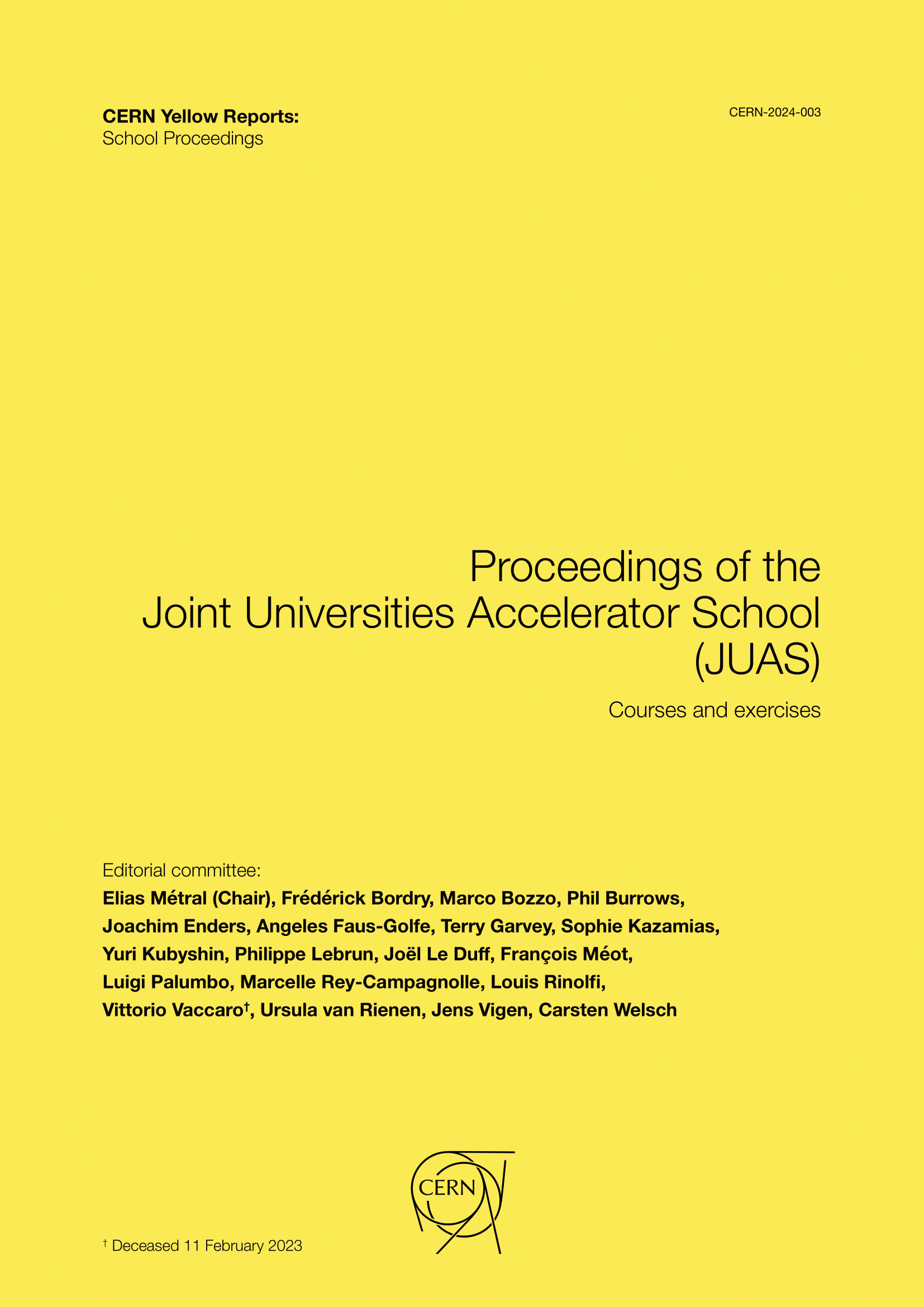Part I — The science of particle accelerators—JUAS Course 1
DOI:
https://doi.org/10.23730/CYRSP-2024-003.1Abstract
Part I, covering JUAS Course 1, is dedicated to the science of particle accelerators, i.e. the basic theoretical foundations. As in the subsequent part, many exercises are provided, along with their solutions, to give students a comprehensive understanding of each step. Two chapters outline the fundamentals of electromagnetism and special relativity that are required to understand how these machines work. A tutorial section and a few selected references complete this presentation. Two additional chapters provide an extensive overview of transverse and longitudinal beam dynamics, focusing on synchrotrons and storage rings. Two simulation codes are introduced from a practical point of view: MAD-X, which is widely used for transverse beam dynamics, and PyHEADTAIL, which is used for longitudinal dynamics. Then, different methods of injection and extraction of a beam in an accelerator are explained. As the machines are not perfect, one chapter addresses transverse linear imperfections and another one addresses non-linear effects, including methods for managing and partially correcting them. A chapter is devoted to synchrotron radiation, the source of more than 60 X-ray light sources in operation around the world. The interaction of X-rays with matter provides a wide range of applications for scientific research and industry, explaining the growing demand for new facilities. This is followed by a discussion of the advantages and drawbacks of linear accelerators. Their design and structure depend on the type of particles accelerated and the required parameters. Details of the technology are given. These machines have a large number of applications in healthcare and industry; in fundamental research, they are mainly used as injectors for synchrotrons and colliders. Collective effects perturb particle motion and play a crucial role in determining the ultimate performance of an accelerator. Cyclotrons, the most widely used hadron accelerators, are compact devices with a 100% duty cycle, making them well-suited for medical applications as well as nuclear physics research. Their underlying concepts are direct applications of the basics. This part concludes on a high note with the accelerator design workshop, which aims to apply the knowledge gained during the school to a realistic case study. This topic was introduced in 1997, and since then it has been very popular and is probably unique in its form. How it is taught has been revised and enriched over the years by successive lecturers.
Published
Issue
Section
License

This work is licensed under a Creative Commons Attribution 4.0 International License.
Authors who publish with this publication agree to the following terms:
- CERN retains copyright and publishes the work licensed under the Creative Commons Attribution License 4.0 that allows others to share the work with an acknowledgement of the work's authorship and initial publication in this series.
- Authors are able to enter into separate, additional contractual arrangements for distribution of the published version of the work (e.g., post it to an institutional repository or publish it in a book), with an acknowledgement of its initial publication in this series.
- Authors are permitted and encouraged to post their work online (e.g., in institutional repositories or on their website) prior to and during the submission process, as it can lead to productive exchanges, as well as earlier and greater citation of published work (See The Effect of Open Access).

